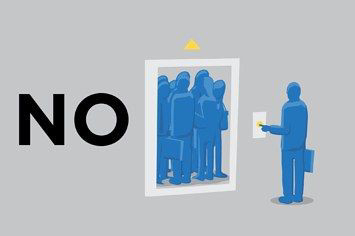Introduction
The Indian workplace landscape has changed a lot over the years, with women breaking barriers and making their presence felt across various industries. But as things change, so do the dynamics within it. One such evolving facet is the experience of men working under women. This feature delves into the complex issue of how some Indian men feel about having female bosses and why they feel that way.
Changing Workplace Dynamics
Women's Advancement in Indian Workplaces:
In recent decades, women in India have achieved significant milestones in education and career progression. This progress has resulted in an enhanced presence of women in leadership roles and management positions. Companies are recognizing the value of diverse perspectives and are actively promoting gender equality and inclusivity within their organizational frameworks.
The Perception Gap: Even though there's a positive shift towards gender diversity, there remains a perception gap when it comes to men working under women. Some men may feel uncomfortable or have negative feelings about having a female boss. To understand this phenomenon better, we need to look into the reasons behind these feelings more closely.
Factors Contributing to Negative Perceptions
Societal Expectations and Stereotypes:
Indian society has strong gender norms and stereotypes that influence attitudes and behaviors in the workplace. These traditional roles often mean men should occupy positions of authority and decision-making, while women are expected to be nurturing and supportive. These stereotypes can create a bias against women in leadership roles.
Cultural Factors: Cultural norms and practices exert a substantial influence on shaping workplace dynamics. The diverse cultural tapestry of India results in varying regional perspectives on gender roles. Some regions may be more accepting of female leadership, while others may have more conservative attitudes.
Lack of Exposure: For many Indian men, working under a female supervisor might be a relatively new experience. Limited exposure to female leaders in their formative years can contribute to discomfort or uncertainty when confronted with a female boss.
Fear of Loss of Face: In a society that places a high value on reputation and "saving face," some men may fear that reporting to a woman undermines their masculinity. This fear can drive negative perceptions and resistance to female leadership.
Navigating Challenges and Building Inclusivity
Breaking Stereotypes:
To change how people think about this, we need to challenge and prove wrong the old ideas that are stuck in people's minds. Companies can do this by teaching their employees about why having different kinds of leaders is a good thing. They can do this through special training programs that talk about diversity and including everyone.
Mentorship and Role Models: To help men become more comfortable working under female supervisors, mentorship programs and access to strong female role models can be invaluable. Exposure to successful women in leadership positions can demystify female leadership and create more acceptance.
Open Dialogue: Creating an environment where employees feel secure in expressing their concerns and questions is crucial. Open and constructive dialogue can help correct misunderstandings and facilitate improved communication between superiors and subordinates, irrespective of gender.
Encouraging Equal Opportunities: Companies should ensure that opportunities for growth and development are accessible to all employees, irrespective of gender. Fair performance assessments and promotions based on merit can help alleviate concerns about bias.
The Way Forward
Diversity and Inclusion Initiatives: Companies must prioritize diversity and inclusion initiatives to create a more inclusive workplace culture. Implementing mentorship programs, diversity training, and equal opportunity policies can contribute to changing perceptions.
Education and Awareness: Educational institutions can play a significant role in shaping future workplace dynamics. Schools and colleges can introduce courses and discussions on gender equality, challenging stereotypes, and promoting diverse leadership.
Empowering Women Leaders: While addressing negative perceptions is essential, empowering women to excel in leadership roles is equally crucial. Encouraging and supporting women to reach leadership positions can help normalize female leadership.
Conclusion
The matter of men holding negative sentiments about working under women in India is a multifaceted issue grounded in societal norms, cultural elements, and individual experiences. Nevertheless, with proactive initiatives from both organizations and society on a broad scale, it is feasible to confront these perceptions and establish workplaces that are more inclusive, diverse, and equitable. Transforming these dynamics necessitates a collective endeavor to dismantle stereotypes, encourage open dialogue, and ensure equal opportunities for all employees, regardless of gender. Ultimately, cultivating a workplace where every individual feels esteemed and appreciated is not solely a question of gender; it represents progress and advancement for the entire nation.


